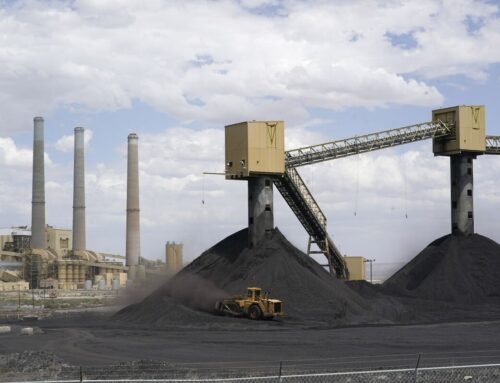California moves closer to ’30×30′ conservation goals as threats to public lands loom
July 7, 2025
California officials have moved closer to their goal of conserving 30% of lands and coastal waters by the target year of 2030, a revelation that arrives as the Trump administration advances directives that could claw back areas that were set aside.
Nearly five years after the inception of the so-called 30×30 initiative, California has conserved 26.1% of its lands and 21.9% of its coastal waters — or roughly 41,000 square miles and 1,150 square miles, respectively — according to a California Natural Resources Agency report released Monday.
In 2020, Gov. Gavin Newsom issued an executive order that set the 30×30 effort in motion. The initiative kicked off in earnest two years later when officials released a detailed road map for the plan. At that time, approximately 23.8% of lands and 16.2% of coastal waters were conserved.
The stated goals of the 30×30 initiative extend beyond conservation. The plan also seeks to restore biodiversity, expand Californians’ access to nature and help mitigate and build resilience to climate change.
Now at the halfway point in the initiative, the state needs to protect less than 4 million acres of land and 283,000 acres of coastal waters to meet its goal.
Wade Crowfoot, secretary of the CNRA, said the state is on track to hit its target — but could be stymied by the federal government, which owns nearly half of California’s lands. Earlier this year, Trump terminated a national version of the 30×30 plan known as the America the Beautiful initiative.
“Federal attacks on public lands and environmental protections … could impact our progress,” Crowfoot said, “and we could actually see — if these federal attacks are successful — our acreage moving backwards.”
In the past year, an additional 853,000 acres of land and 191,000 acres of water were conserved in California — representing an area the size of Glacier National Park in Montana, the report states.
The majority of that land — roughly 685,000 acres — received enhanced protection through former President Biden’s designation of two new national monuments early this year: Chuckwalla and Sáttítla Highlands. The monuments include vast swaths of land in the Southern California desert and Northern California forests that tribes consider sacred.
The Trump administration has sent signals that it may seek to abolish both Chuckwalla and Sáttítla Highlands.
In March, the Trump administration issued and then appeared to roll back an announcement implying the president had rescinded his predecessor’s orders creating the monuments. Then, last month, the Justice Department released a legal opinion that concluded that Trump could undo his predecessor’s creation of Chuckwalla and Sáttítla Highlands. As of today, the monuments still exist, though their subsistence seems at risk.

Morning light glows on the Chuckwalla Mountains. In January, the Biden administration established Chuckwalla National Monument in the California desert.
(Robert Gauthier / Los Angeles Times)
Leaving the monuments aside, California’s biggest 30×30 gains were on the sea, with the amount of coastal waters conserved jumping nearly 6% year over year.
The Chumash Heritage National Marine Sanctuary, off California’s rugged Central Coast, represents nearly all of the newly conserved waters. Designated by the Biden administration last November, the 4,543-square-mile sanctuary marked the first such preserve in California to be managed in cooperation with Indigenous peoples.
The designation prohibits new oil drilling and offers other protections, but some conservationists believe it falls short of meeting the criteria for inclusion in the 30×30 tally.
“California’s national marine sanctuaries unfortunately do not limit damaging stressors on marine biodiversity,” said Sandy Aylesworth, director of the Pacific Initiative at the Natural Resources Defense Council. The Chumash Heritage National Marine Sanctuary allows for the operation of an oil and gas pipeline as well industrial fishing, she said.
“So if this area is to count toward the goal, we’d like to see it meaningfully strengthen biodiversity protections in the sanctuary,” she said.
Crowfoot, the state Natural Resources secretary, said a management plan that would do that is underway. If it doesn’t materialize in a way that boosts environmental and biodiversity protections, he said, then the sanctuary could be removed from areas the state considers protected under the 30×30 plan. That would knock the figure for protected waters down.
Looking ahead, Crowfoot said officials are focused on expanding California state parks by integrating private land nestled inside them as well as adjacent properties purchased by conservation groups. An estimated 30,000 acres of land could be added to the state park system for no additional cost because it’s within a park or next to it, he said.
Crowfoot called the 30×30 plan “more important than ever” in light of worsening climate change, with the report stating that natural ecosystems conserved through the initiative capture and store greenhouse gases.
Those areas are also expected to serve as refuges for animals as the climate shifts, as well as enhance biodiversity, which, the report states, “supports the clean water and soil fertility essential for human survival and environmental stability.”
Search
RECENT PRESS RELEASES
Related Post



